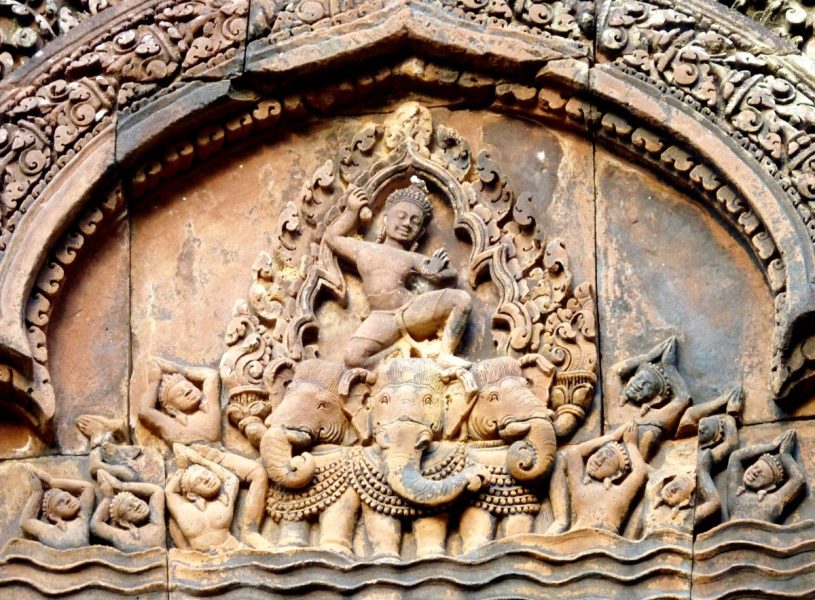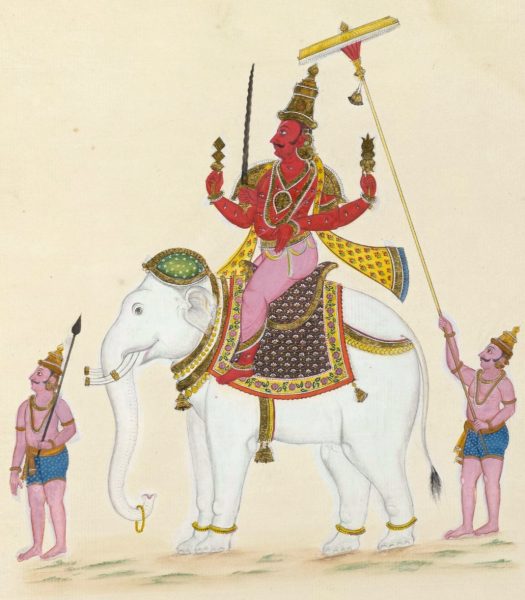
The downfall of Indra: How the warrior god of Vedic age was sidelined

Nearly every civilisation in the world had the presence of a war god who was battle-ready, defeating evil forces, fighting demons and armies of evil influences, and saving mankind — be it Greek Ares, or Latin Mars, or a Norse Thor or a Vedic Indra. Yet again, nearly every culture had a thunder or a rain god providing the much-needed rains and water to the thirsty earth — be it Greek Zeus, or an Aztec Tlaloc or Norse Thor or Vedic Indra.
A formidable force
No matter which culture one looks at, such gods were present and battles and skirmishes were what they were known for. Indra was one such formidable force, who was an important presence during the Vedic times. According to Arthur Anthony Macdonell, a noted Sanskrit scholar, “His (Indra’s) importance is indicated by the fact that about 250 hymns celebrate his greatness more than those devoted to any other gods and very nearly one fourth of the total number of hymns in the Rig Veda, about 300 hymns in all, refer to him in association with other gods in the Rig Veda.”
Also read: How a Broadway-style Ramlila made the epic a surreal spectacle
Indra also finds mention in other texts, like the Atharva Veda, the Satapatha Brahmana and, of course, the epics: Ramayana and Mahabharata. His constant presence in the post-Vedic period, though in a stark contrast to his Vedic glory, necessitates an important relook at Indra. According to Prof. R. N. Dandekar, the noted Indologist and a Vedic scholar, “Vedic mythology is essentially an ‘evolutionary’ mythology, that, at different stages in the evolution of the Vedic mythological thought, it has been dominated by different Vedic gods and that the Indra-dominated mythology represents but a late stage in the course of that evolution…….In other words, the dynamic character of the life of the Vedic people is faithfully reflected in the complex make up of their gods.”
A warrior god or a human hero?
If we analyse the Vedic texts, especially the Rig Veda, we find Indra represented as a cosmic hero, a warrior god and a dragon-killing hero. The major descriptions centre around his aspects of war and his efforts to kill demons, the most notable of them being his killing of Vritra. Dandekar further explains that the Vedic gods represented nature and were broadly categorised as those belonging to the sky, the mid-region and those belonging to the earth.
Many scholars feel that Indra was not originally a god, but a human hero who was deified in due course of time due to his unachievable feats. He also superseded the other existing gods of the day. His mortal connect is often found in many of his essentially human characteristics that the Vedic poets have referred to as his ‘weaknesses’, the most important of which was his fondness for Soma. His indulgences in the beverage are a theme for many of the hymns found in Rig Veda.
Also read: How a Broadway-style Ramlila made the epic a surreal spectacle
However, Soma was not seen as an intoxicating drink, rather as Dandekar puts it, “Soma always exhilarated him to carry out his warlike deeds…” While there are many references of Indra indulging in Soma, Dandekar observes that the intention of these seers was not disrespect towards Indra. “On the other hand, by light-hearted poking at such foible that high personality is brought closer to the hearts of the people, for, it, indeed, emphasises his essential humanness. As a matter of fact, it is believed that such harmless foibles enhance, rather than detract from, the genuine greatness of that person,” he states.
A fertility deity
Indra, along with his warrior persona, was also a fertility deity in the Vedic times. The bestowal of energy and of children is a function of Indra which was noticed as early as in the age of the Rig Veda. There are many hymns which invoke Indra to grant fertility and virility; he is seen as a deity who grants the boon of children to women. And, then, there is his association with rains, too: He was also the god of rain and thunder. Often, his many associations or rendezvous with women, both married and unmarried, were metaphors for his fertility function, be it Apala, who invokes Indra or Ahalya, who is the anthropomorphized form of ‘the as yet unploughed land’. However, these same associations were targeted in the later period as his wayward ways, which needed to be punished.
Both human and superhuman
The Vedic texts, thus, present an interesting combination of human and superhuman qualities and it is this combination that makes the character of Indra so attractive. However, it is this same humanness that led to his downfall later in the post-Vedic times.

The Vedic times were followed by the rise of ritualism, which is depicted in the ‘Brahamana’ texts. In these texts, the Vedic gods seem to be subordinated by the rise of sacrifices and rituals. These texts put greater emphasis on the practice and performance of rituals and yagnas, and with time the adherence to these complex practices became sacrosanct. Any error, however minor, could result in dangerous consequences for the sacrificer, leading to the shift of importance from the deity to the ritual. This also brought the focus on the priestly class, the only class that could perform these rituals. This elevation of the priestly class also led to the shift in focus of the gods in the distant skies!
Opinion: Scepticism towards Hindu religious subjects is passe; Bali art shows the way
The rise of the new gods
With the changing times, and the rise of different professions and dual agricultural practice in a year, the dependence on nature gods declined. People were settling down and were not as nomadic as before, which reflected in lesser dependence on warrior gods. With the rise of new gods, the older gods were being forgotten or losing prominence.
The diminution in Indra’s prominence coincided with the rise of cults associated with Vishnu, Brahma and Shiva, each of who usurped the importance of Indra. His decline is shown in Ramayana through his tryst with Ahalya and the subsequent punishment by a sage. We further find him losing to Meghnad, the son of Ravana, and thus earning the epithet of Indrajeet, the one who vanquishes Indra. Thereafter, Indra is relegated to a state of constant insecurity and has been reduced to be an apology of his former self. The episode of Govardhan parvat, where he is made to kneel down and apologise to a child-Krishna, is nothing short of a complete annihilation of the greatness of a once-formidable Indra.
Indra is indeed a deity worth a relook and his rise and fall depicts the change in the needs and wants of a society, which is constantly emerging and changing its priorities.
(Utkarsh Patel is an author and a lecturer in Comparative Mythology. His latest book, ‘Indra: The Rise and Fall of a Hero’ (Rupa Publications), is an effort to put this brief theory in a novel format. It depicts the greatness of a Vedic hero and his fall in the post-Vedic times.)


